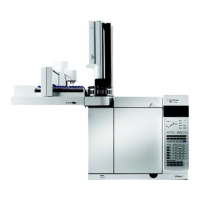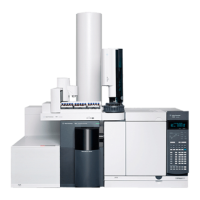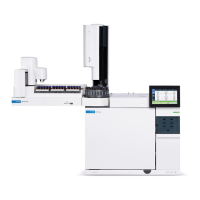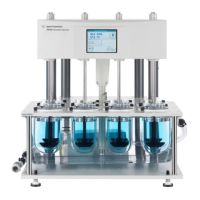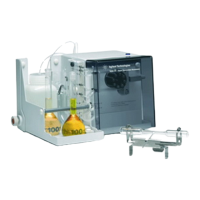Inlets 3
Advanced Operation Manual 73
mimics traditional splitless operation and transports the
analytes from the liner to the column. The purging mode
allows the user to prepare the inlet for the next run.
A fundamental difficulty with solvent vent mode is the
potential loss of volatile analytes with the solvent. Several
solutions are possible for this situation:
• The inlet liner can be packed with a more retentive
material, such as Tenax. This greatly improves volatile
analyte recovery but may impact recovery of higher
boiling materials.
• Some of the solvent can be left in the liner when sample
transfer begins. The residual solvent acts like a stationary
phase and retains volatile material, but at the expense of
a larger solvent peak.
• The inlet temperature can be reduced. This reduces the
vapor pressure of the volatile analytes and permits higher
recoveries.
Solvent removal can be speeded up by:
• Reducing pressure in the inlet during sample
introduction—the Vent pressure parameter
• Increasing flow through the inlet—the Vent flow parameter
While all these possibilities do complicate use of the PTV,
they provide increased flexibility and new potential to solve
difficult problems.
Sequence of operations
These are the steps in a typical analysis using the solvent
vent mode:
Tabl e 14 The solvent vent process
Step Parameter Value
1 Before injection Flow at split vent Either Purge flow or Saver flow
Inlet pressure Derived from column setpoint
The system is resting, with Purge flow (or Saver flow, if on) through the inlet.
2 Prep Run begins Flow at split vent Vent flow setpoint
Inlet pressure Vent pressure setpoint
Setpoints change to prepare for injection. When GC is ready, the sample is injected. Inlet and oven
temperature program Init times begin. Solvent venting and analyte trapping begin.
3 At Vent end time Flow at split vent None, split valve closed

